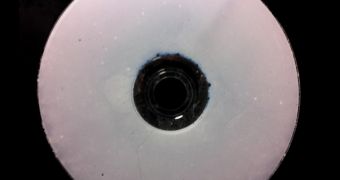We've seen compact disks used for various things, from the normal role of data storage products to glimmering curtains obscuring the kitchen from sight, but there always seems to be one more thing they are good for. Sewage water has just joined that list. To be specific, Din Ping Tsai, a physicist at National Taiwan University, found a way to use audio CD in a process that purifies sewer water.
He developed the concept with the help of colleagues from National Taiwan University, National Applied Research Laboratories in Taiwan, and the Research Center for Applied Sciences in Taiwan.
Essentially, the large surface of the optical disks can be used as a platform to grow very small, upright zinc oxide nanorods.
Each of those rods is about a thousandth the width of a human hair, but in great numbers, they can function as a cheap semiconductor working as a photocatalyst.
When illuminated with ultraviolet light, the zinc oxide “nanohairs” can break apart the pollutants and other organic molecules in sewage.
"Optical disks are cheap, readily available, and very commonly used," says Din Ping Tsai.
We have to admit that the man is definitely onto something here. Compact disks are notorious for being hard to recycle, or at least unlikely to do the world any favors if they're just thrown away on the side of the road. Simple plastic is bad enough, but CDs are anything but simple.
So to learn that they can actually be used to such a purpose, the purification of sewage, can only be a welcome surprise.
The team will present the CD-based wastewater treatment device at the Optical Society's (OSA) Annual Meeting, Frontiers in Optics (FiO) 2013, in Orlando, Central Florida. The show will be held from October 6 to October 10, 2013.
For an idea of how well the treatment works, the CD “reactor” was pitted against a solution of methyl orange dye (a model organic compound often used to evaluate the speed of photocatalytic reactions).
The half liter solution was treated for 60 minutes and was left with 95% of all contaminant broken down. And with 150 ml of waste water per minute, the concept can prove quite lucrative, if applied at the proper scale.

 14 DAY TRIAL //
14 DAY TRIAL //